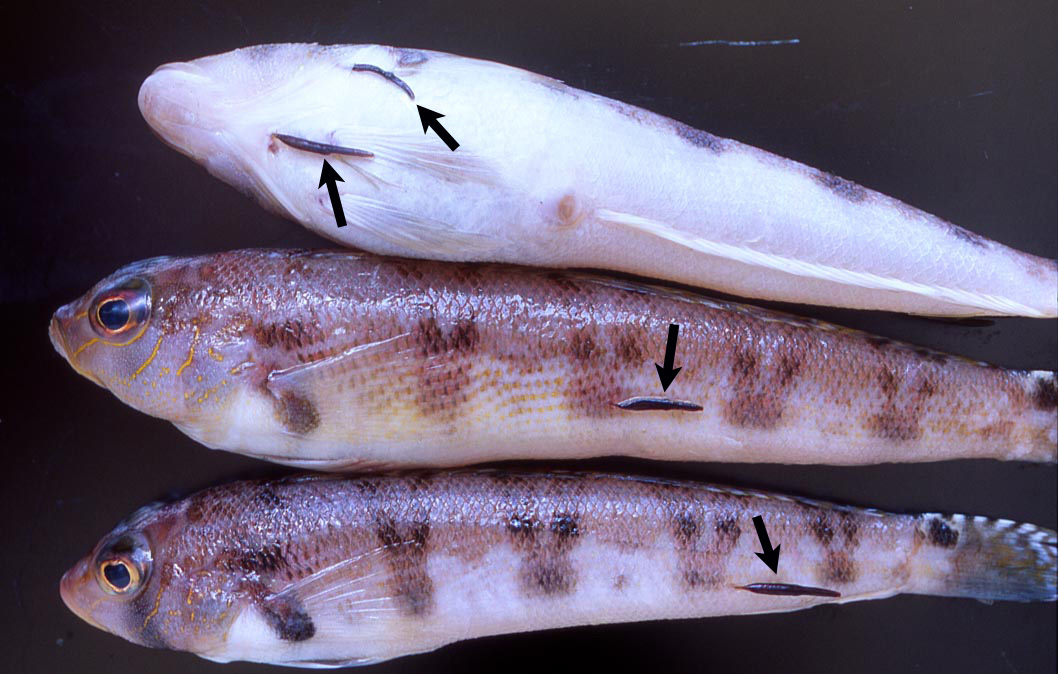

| Parasite | Lernaeenicus sp. |
|---|---|
| Taxonomy | Arthropoda, Copepoda |
| Host | Grub fish (Parapercis sp.) |
| Infection site | Skin |
| Clinical sign | Black worms are visually observed on the skin (Fig. 1). |
| Parasitology | The parasite is black in colour (Fig. 2) and ca. 14.8 mm in length excluding the egg sacks. It is hard to pull out the worm because a rhizoid head is deeply stuck in the host’s musculature (about 4 mm in depth) (Momoyama and Tensha, 2006). |
| Pathology | No report |
| Health hazard | Since this parasite is not infectious to human, it is harmless in food hygiene. |
| Diagnosis | Check the morphology of parasite on the skin. |
| Other information | Momoyama and Tensha (2006) reported that one to six worms parasitized per one fish, and that the intensity of infection was twice much higher in the dorsal region than the ventral region. They identified this parasite as Pennella sp., but we describes here as Lernaeenicus sp. according to the suggestion of K. Nagasawa (a personal communication). |
| References | Momoyama, K. and K. Tensha (2006): Ugly-looking parasitic infections and
other abnormalities of wild fish and shellfish caught in the coastal or
inland waters around or in Yamaguchi Prefecture. Bull. Yamaguchi Pref. Fish. Res. Ctr.,
4, 143-161. |
Fig. 1. Lernaeenicus sp. (arrows) on Grub fish.
(Photos by K. Momoyama)
Fig. 2. Lernaeenicus sp. from Grub fish. Note the rhizoid head
and two egg sacs at the anterior and posterior ends, respectively.